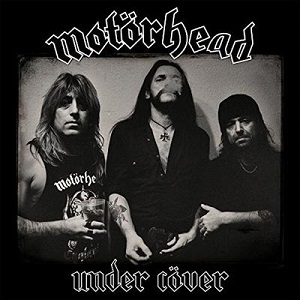Album Review: Motörhead – Under Cöver
2 min read
2015 was a brutal year for fans of English hard-rockers Motörhead. First, the band’s (twice) former-drummer Phil “Philthy Animal” Taylor – who played on many of the group’s biggest hits – passed away in early November, and not two months later the band’s iconic frontman, core-member, and rock legend, Ian “Lemmy” Kilmister, died four days after his seventieth birthday, and a mere two after being diagnosed with cancer. Understandably, Lemmy’s death resulted in Motörhead disbanding. Under Cöver collects together eleven cover version performed by the band, and is the first release of studio material since their final record, Bad Magic, in 2015.
 From the tell-tale riff of Judas Priest’s Breaking the Law which opens Under Cöver, to the pounding and gravelly rendition of Metallica’s Whiplash which closes the album – and David Bowie’s Heroes in between – every song sounds like Motörhead. This is the collection’s great strength and its inescapable weakness. This will please fans, and is certainly pleasing enough for the casual listener, but none of the tracks ventures much towards reinterpretation, instead contenting themselves with imitation – perhaps reflecting Lemmy’s stated affinity with punk, and his long-held contention that Motörhead was rock ‘n’ roll band in the vein of the genres’ progenitors.
From the tell-tale riff of Judas Priest’s Breaking the Law which opens Under Cöver, to the pounding and gravelly rendition of Metallica’s Whiplash which closes the album – and David Bowie’s Heroes in between – every song sounds like Motörhead. This is the collection’s great strength and its inescapable weakness. This will please fans, and is certainly pleasing enough for the casual listener, but none of the tracks ventures much towards reinterpretation, instead contenting themselves with imitation – perhaps reflecting Lemmy’s stated affinity with punk, and his long-held contention that Motörhead was rock ‘n’ roll band in the vein of the genres’ progenitors.
Four of Under Cöver’s tracks – Sex Pistols’ God Save the Queen, Ted Nugent’s Cat Scratch Fever, The Rolling Stones’ Sympathy for the Devil, and Ozzy Osbourne’s Hellraiser – have previously appeared on Motörhead albums, while a further two – Starstruck and Shoot ‘Em Down – featured on tribute albums to Ronnie James Dio and Twisted Sister respectively. While the five previously unreleased tracks will round-out fans collections, the albums main value is in its display of the songs and artists bona-fide rock legends choose to pay homage to. Further to this, the album’s recordings span over two-decades, offering insights into the subtle changes in the group’s sound – such as the mellowing of Lemmy’s vocals, most noticeably on the most recent recordings.



